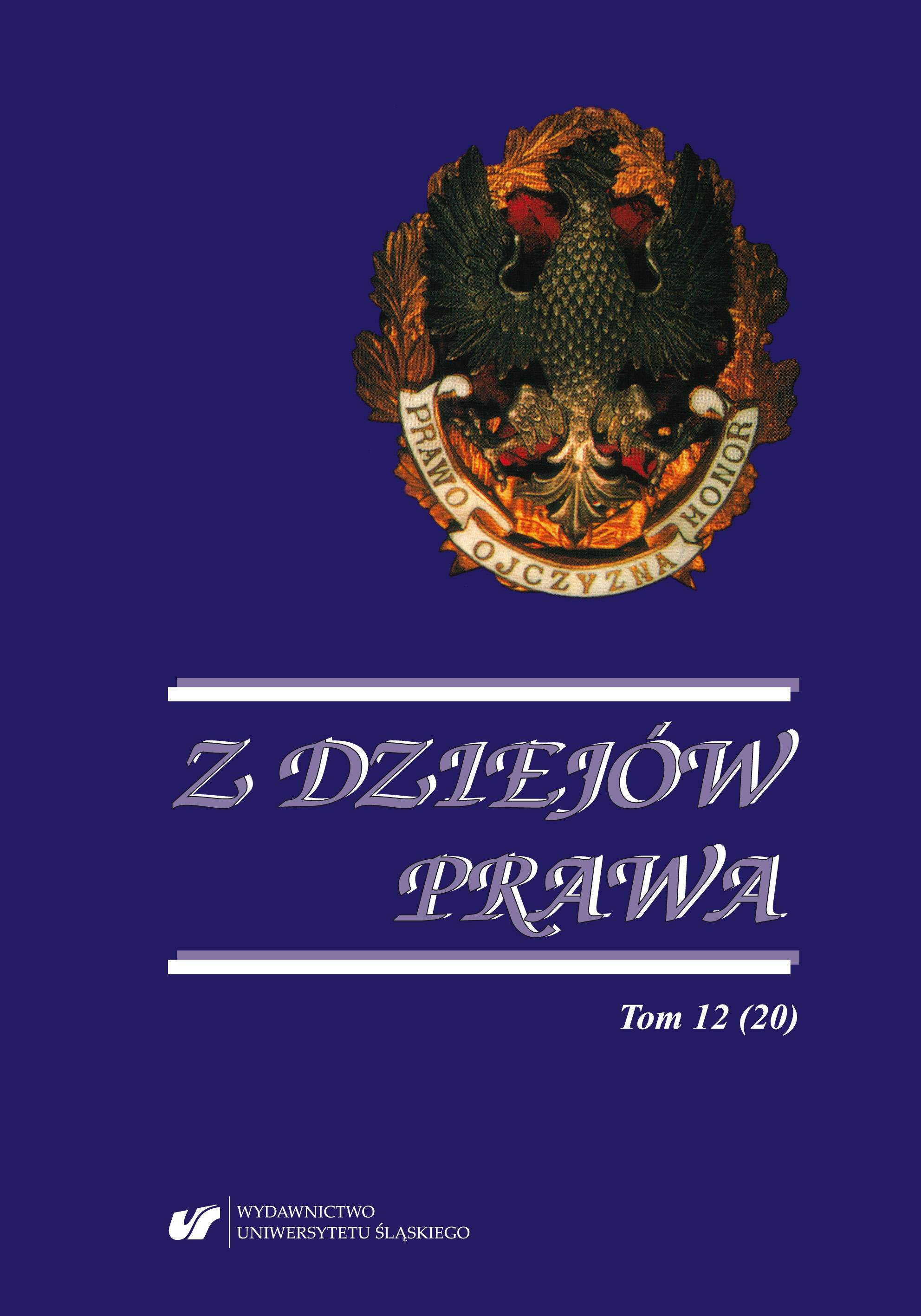Pierwsza wojna światowa a powstanie Republiki Czechosłowackiej (Czesko-Słowackiej) 1914—1920 (Zagadnienia wybrane)
The First World War and the establishment of the Czechoslovak Republic (Czech and Slovak Republic) 1914—1920 (Selected issues)
Author(s): Józef CiągwaSubject(s): Law, Constitution, Jurisprudence
Published by: Wydawnictwo Uniwersytetu Śląskiego
Keywords: First Czech and Slovak Republic; Prague centralism; the idea of Czechoslovakism; Slovakia’s autonomy
Summary/Abstract: The First Czech and Slovak Republic was established in the autumn of 1918. This date was preceded by several years of internal and, above all, external (USA, France, Switzerland, Russia) actions which facilitated and accelerated the creation of the first common state of Czechs and Slovaks. These facts included the establishment of the Czech-Slovak National Council in Paris, the 1915 agreements between the Czech and Slovak organizations (the Cleveland Agreement) and the 1918 agreement (the Pittsburgh Agreement); the creation of Czech-Slovak legions in Italy, France and Russia; the million-dollar fundraising among Slovak emigrants to build a common state; the recognition of the Czechoslovak National Council as the interim government of the Czech and Slovak Republic by the USA, France, Italy, England and Russia. From the very beginning, a state of imbalance between the legal and factual position of Czechs and Slovaks in the new state’s system was evident. A classic example of this imbalance was the establishment of the First Republic by a decision of the Czech National Committee in Prague on 28 October 1918, without waiting for the approval of the Slovak National Council in Turčiansky Svätý Martin, expressed in the declaration of 30 October 1918, and soon afterwards the disestablishment of the Council, despite the fact that its declaration stated that the Council was the only representation of the Slovak nation. A consistent continuation of the centralist policy of Prague was the idea of Czechoslovakism, enshrined in the Constitution of 29 February 1920 and other constitutional laws (also of 29 February 1920), assuming that there is no separate Slovak nation and that Slovaks are only a branch of the Czech nation. This position of T.G. Masaryk, E. Beneš, Hlasists and Prudists led to a 20-year-long dispute between centralists and Slovak autonomists, represented by the chairman of the Slovak People’s Party, priest Andrej Hlinka. The Constitutional Act on the establishment of county and district offices of 29 February 1920 led to the etatization of public administration, i.e. to a significant reduction in self-government. In the circles of central authorities and supporters of the idea of Czechoslovakism, there was a view that Slovak autonomists did not have to fight for autonomy, because after the entry into force of the County Act they already had it.
Journal: Z Dziejów Prawa
- Issue Year: 20/2019
- Issue No: 12
- Page Range: 407-434
- Page Count: 28
- Language: Polish

